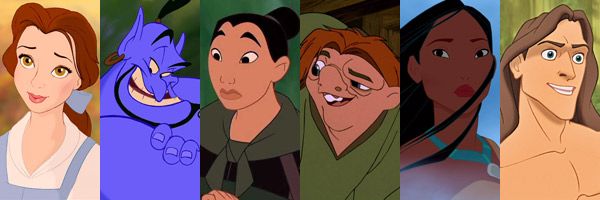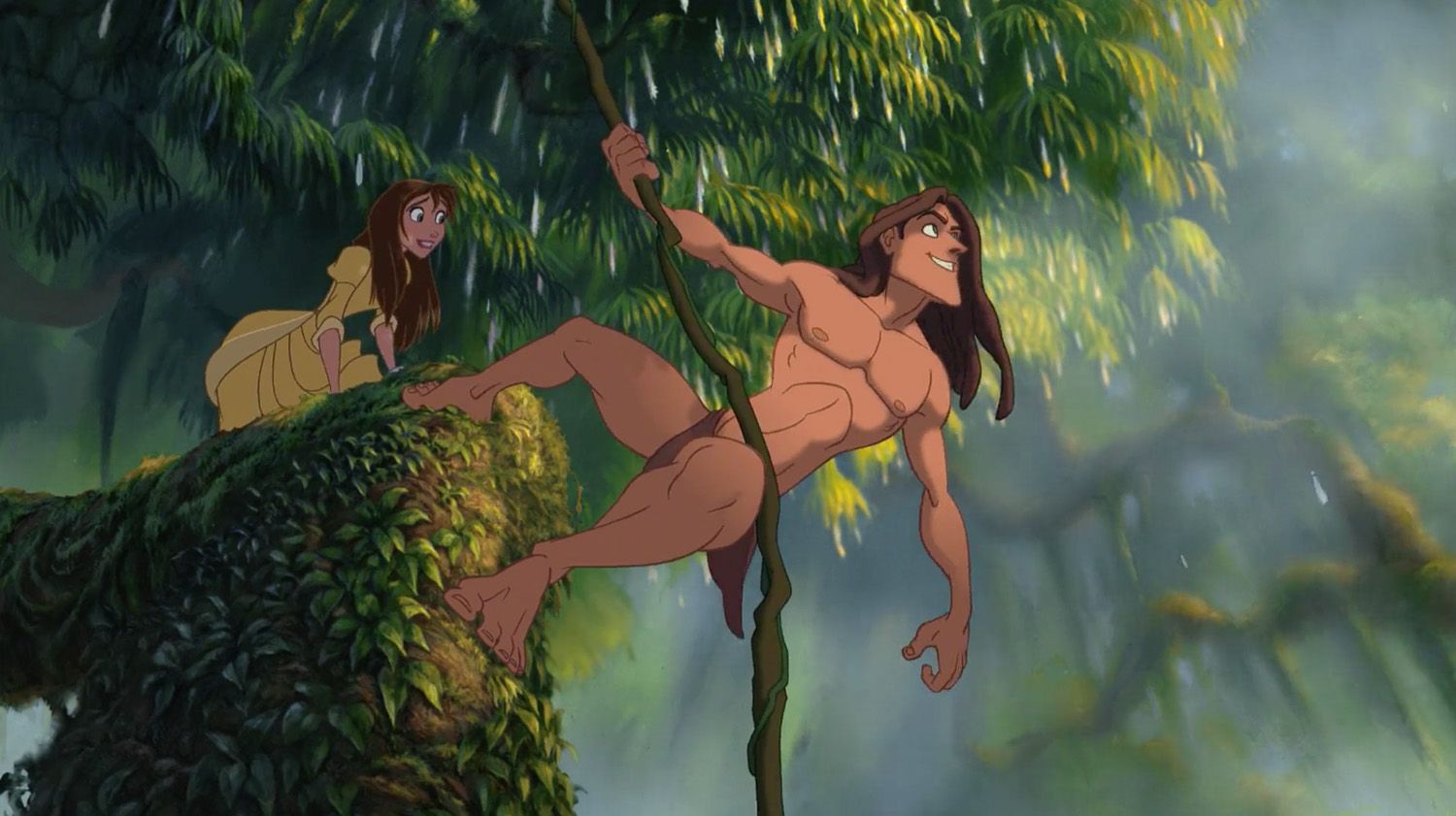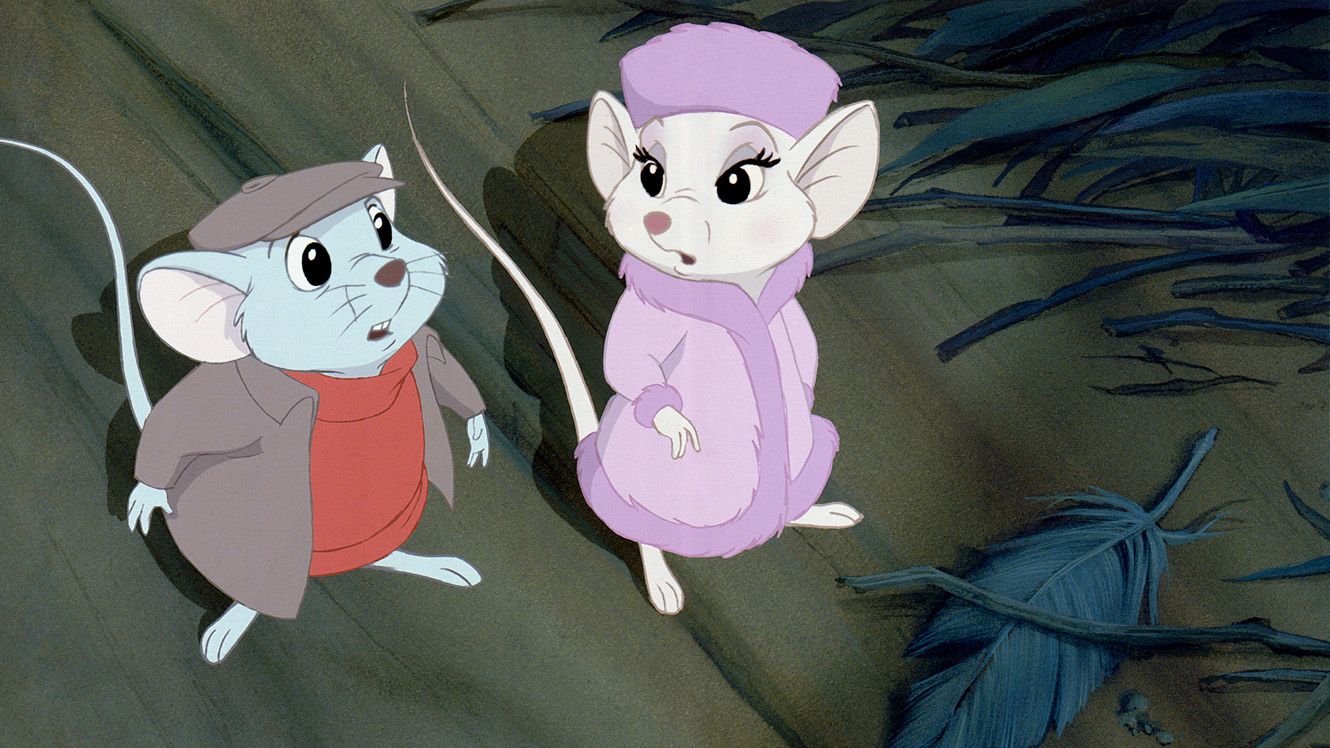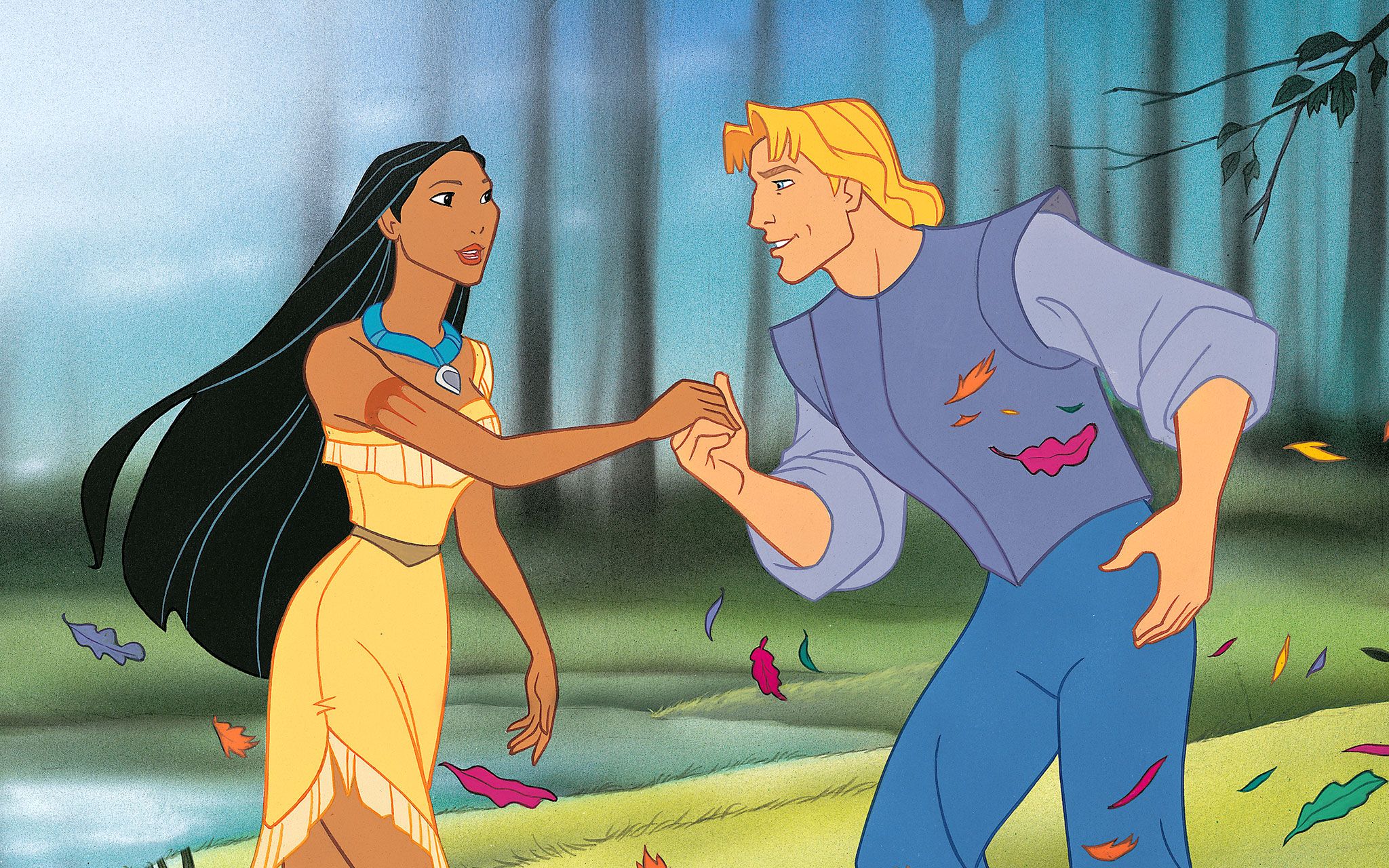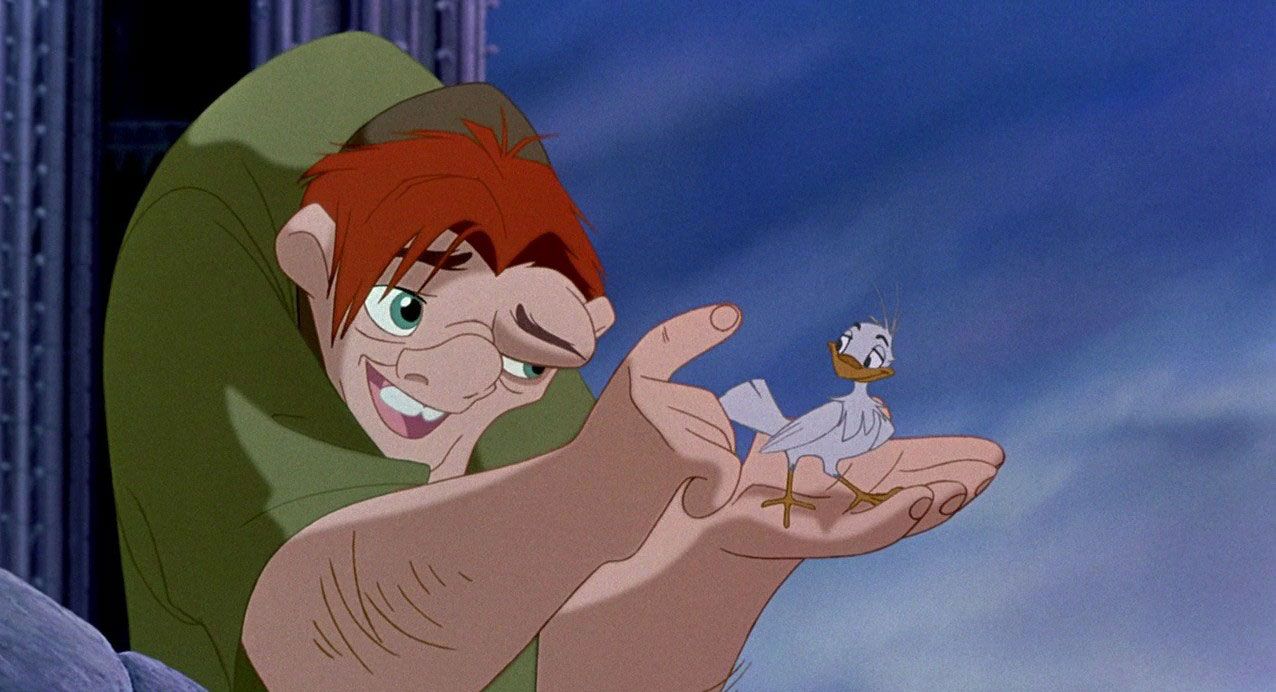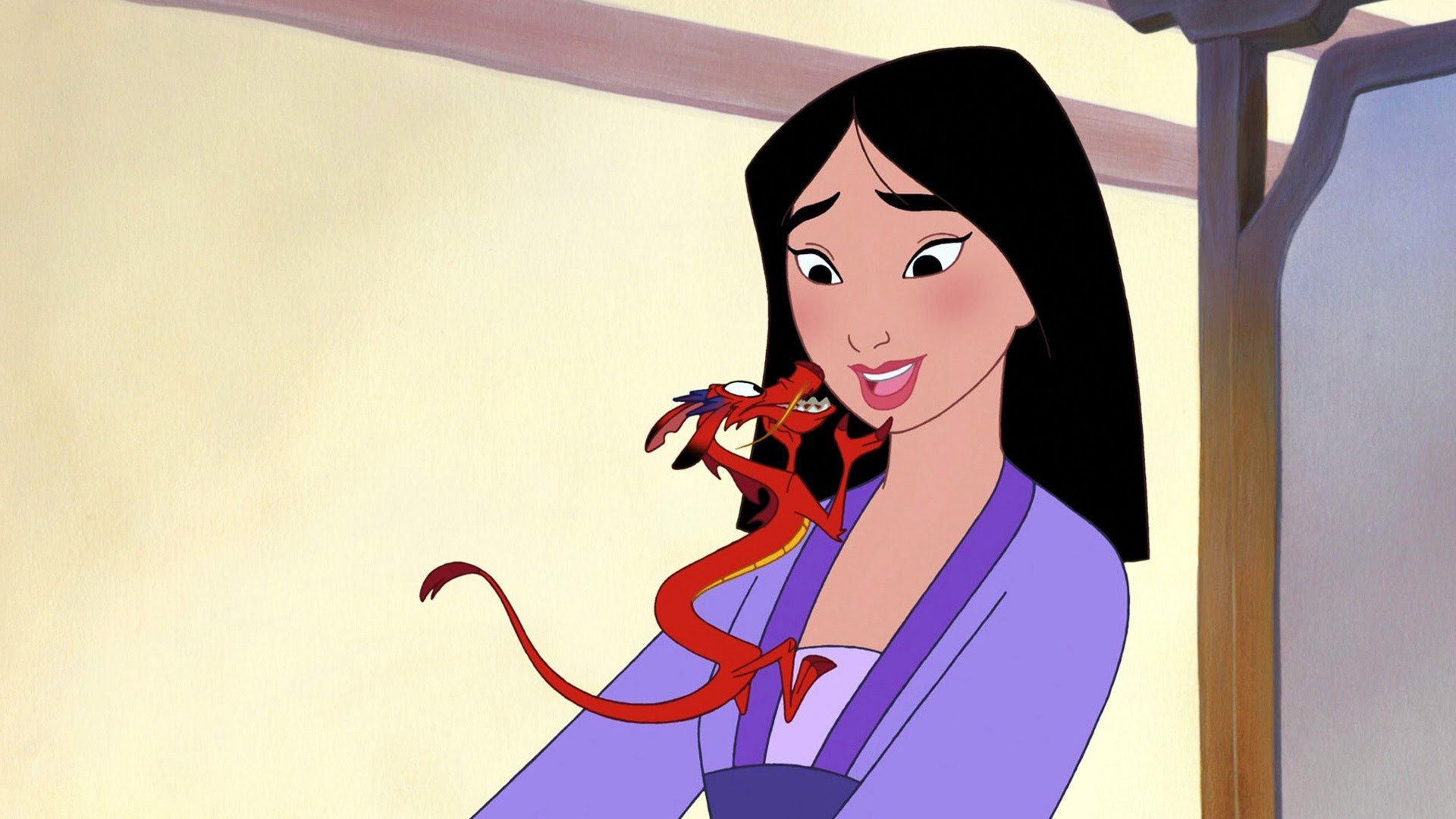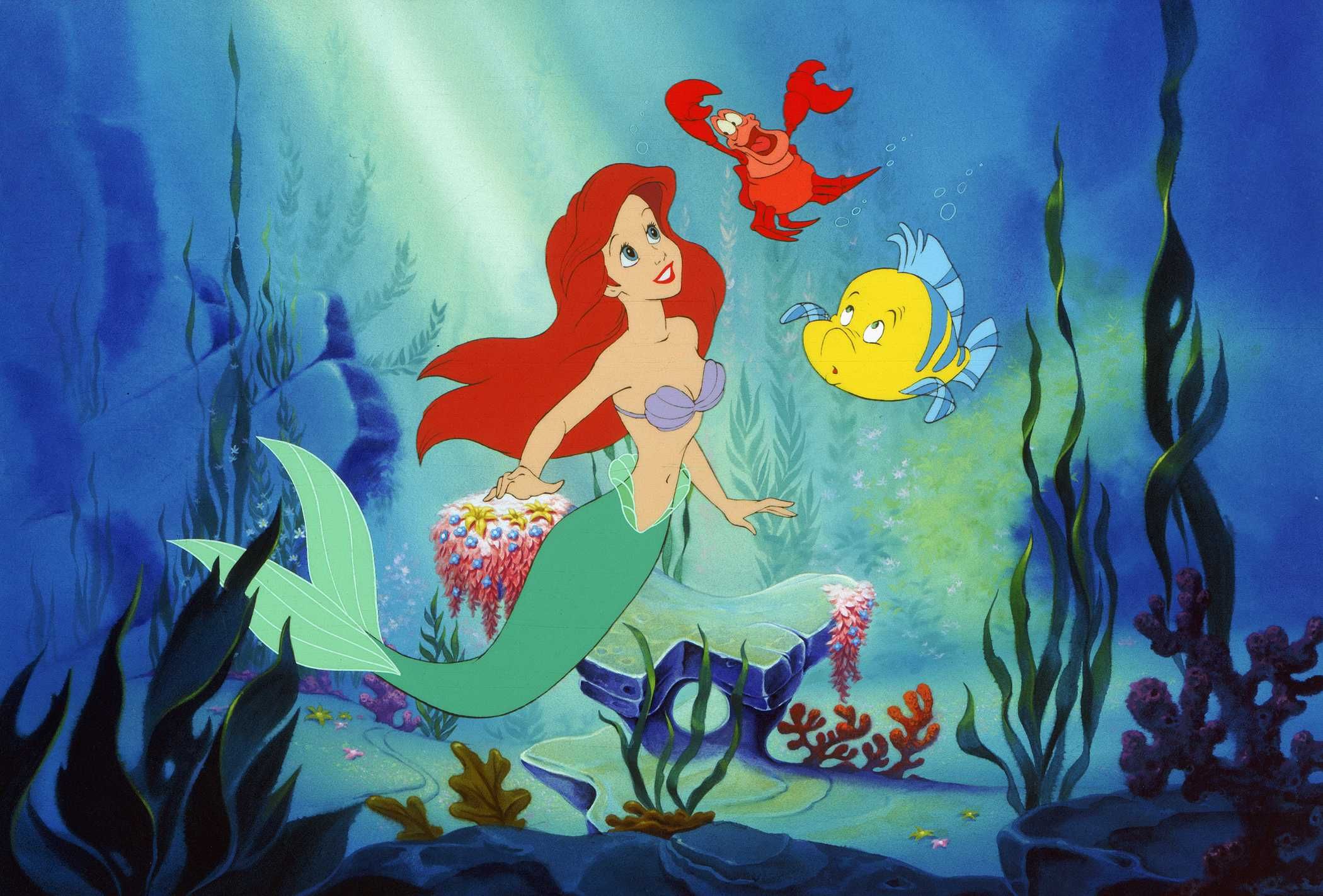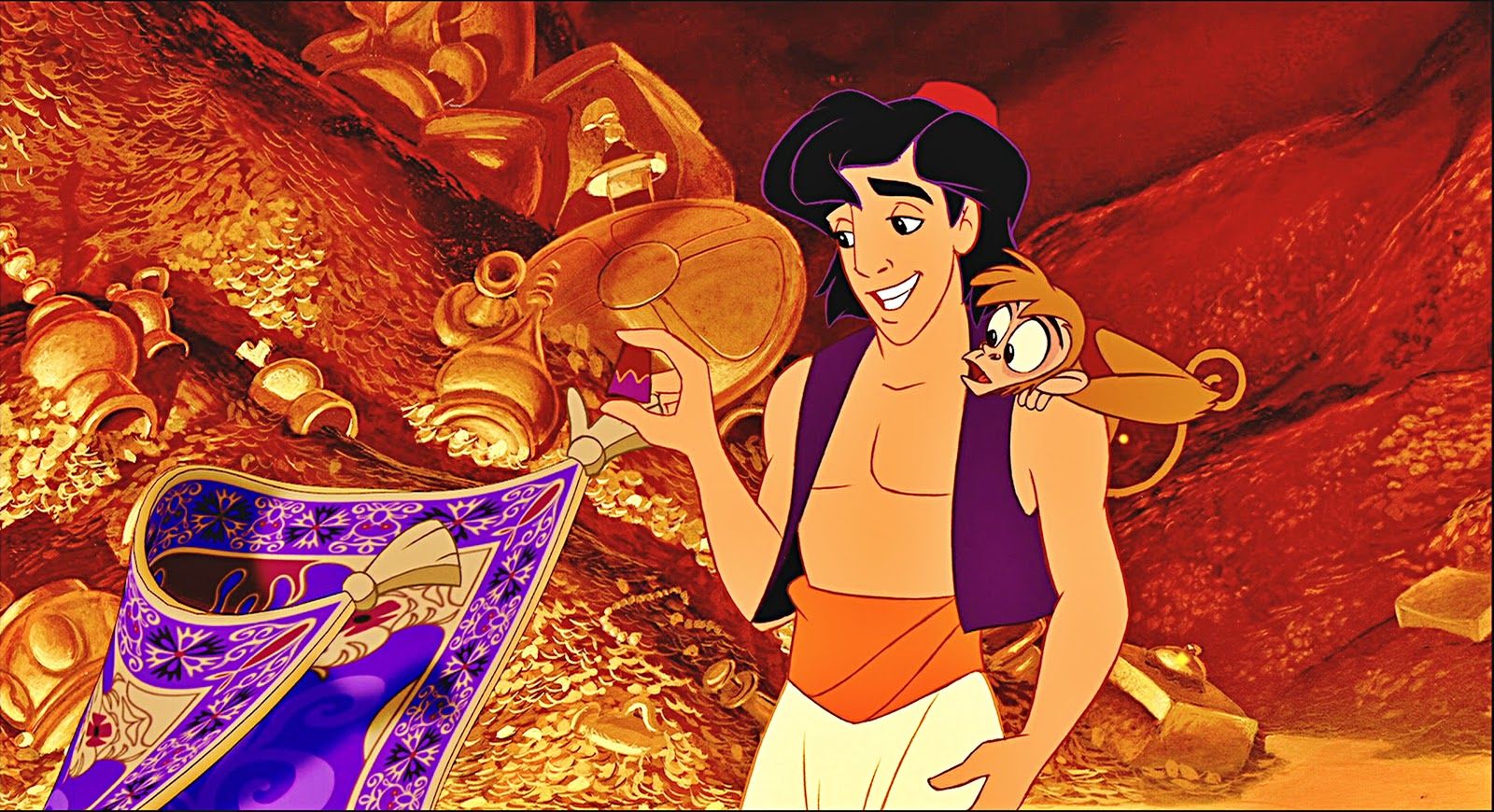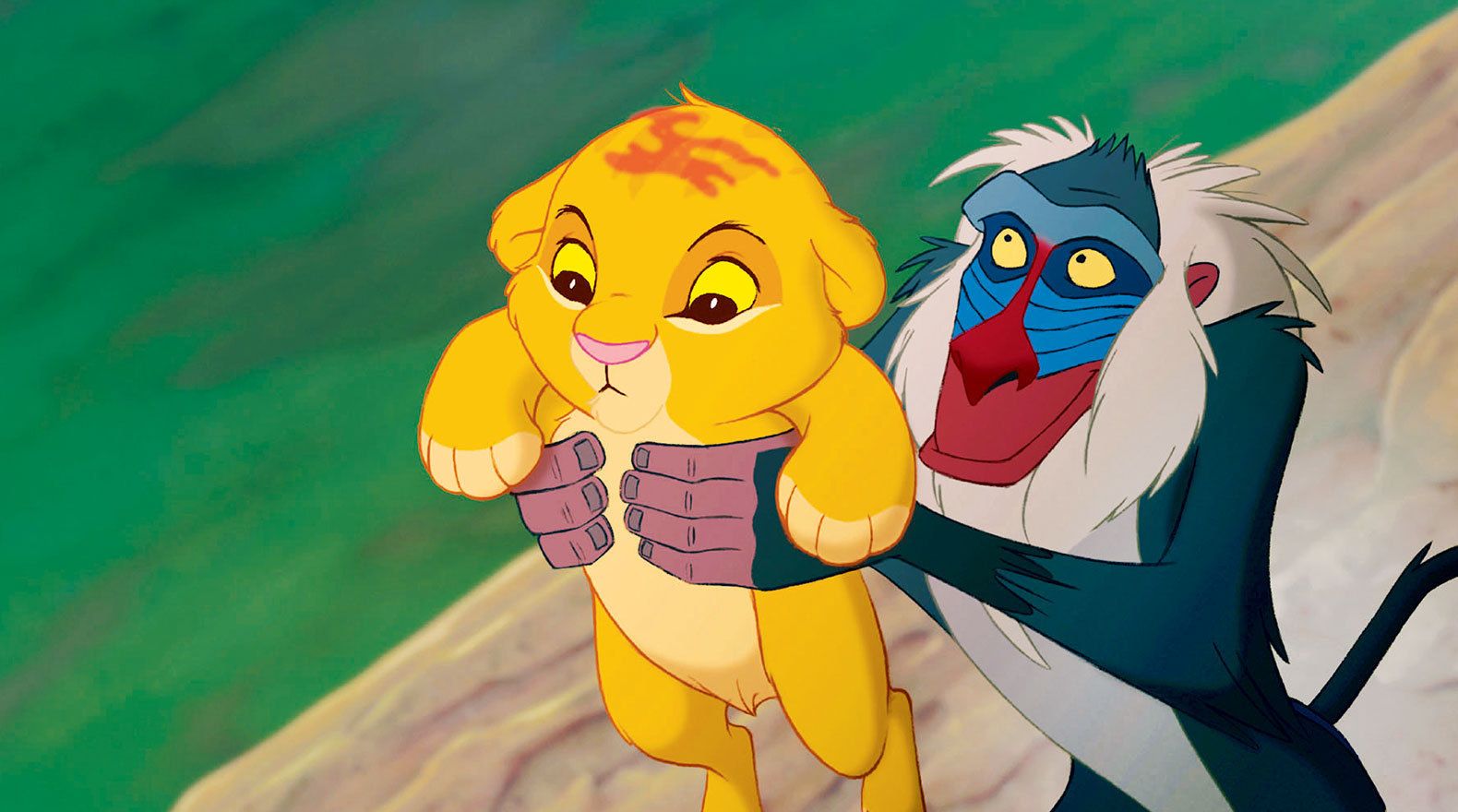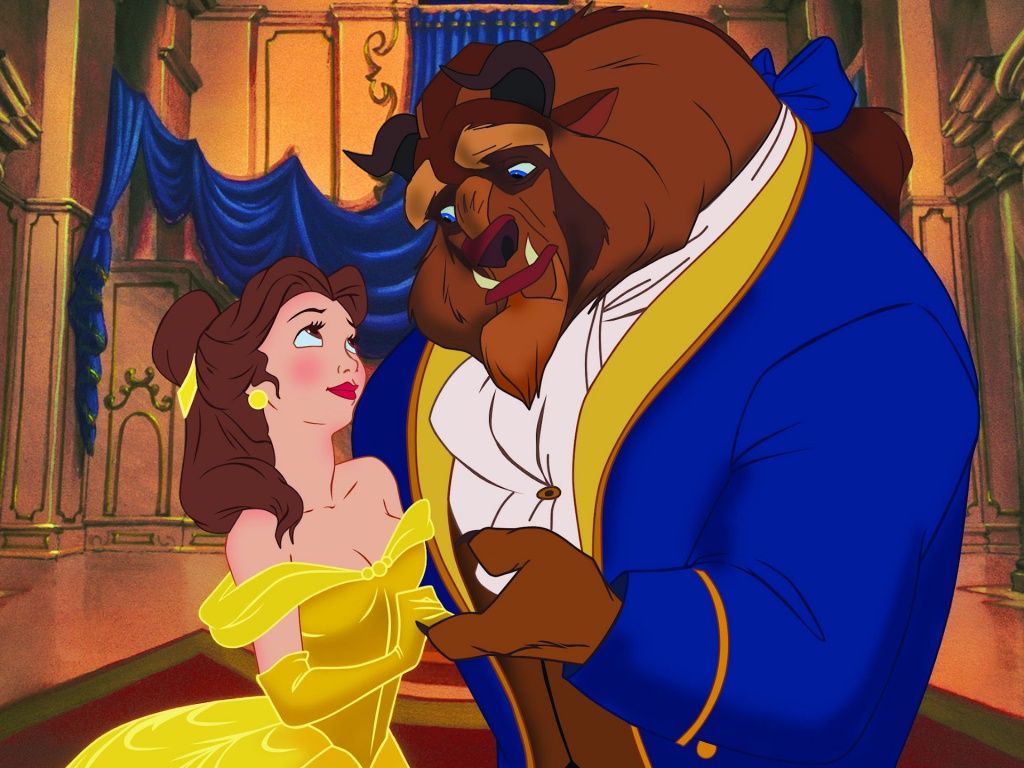Walt Disney Animation Studios is a cultural icon. The studio literally invented an entire business with 1937’s Snow White and the Seven Dwarves, which was the first full-length animated feature ever made in the United States. Under Walt Disney’s purview, the studio would go on to create classic after classic throughout the 40s, 50s, and 60s, but somewhere in the late 70s and throughout the 80s, Walt Disney Animation had lost its way. The Black Cauldron, released in 1985, is considered a major turning point for the studio as it was the first Disney film to receive a PG rating and was considerably darker than anything the studio had produced before. It was, in short, a long way off from Snow White.
After this, new Disney CEO Michael Eisner assigned former Paramount president of production Jeffrey Katzenberg to oversee Disney’s animated features department, making it a priority to turn things around both creatively and financially. What followed is now considered Disney’s “Second Golden Age”, a wave of creatively ambitious animated films that revitalized the Walt Disney Animation Studios brand, garnered immense critical acclaim, and solidified Disney’s animated films as a force to be reckoned with at the box office.
This period lasted almost the entirety of the 1990s, resulting in some of the very best animated films ever made. And with Walt Disney Animation thriving thanks to films like Moana and the live-action side now pilfering the animated library for new adaptations, now seems like a swell time to look back on this Second Golden Age of beloved animated classics and revisit them, film-by-film. What follows, then, is every 90s Disney animated movie ranked from worst to best.
Note: The Little Mermaid was technically released in November 1989, but is widely considered to be the first film of Disney’s Second Golden Age. Thus, for the purposes of this list I’m including it in the ranking.
Note #2: For the purposes of this list, I only considered films produced by Walt Disney Animation Studios—i.e. films produced by the same creative team/executives—and not films from offshoot arms like DisneyToons. So that's why there's no A Goofy Movie or Doug's 1st Movie.
10. Tarzan
Tarzan is a bad movie, and fittingly this is the one that marked the end of arguably Walt Disney Animation’s best decade ever. The 1999 film was a sign of things to come—a movie that’s overly saccharine, features a pop-heavy soundtrack, eschews the Broadway leanings of films like The Little Mermaid and Beauty and the Beast, and features an overly simple theme of “family is what you make it.” Beyond that, it’s just boring. Perhaps that’s the fault of the source material (maybe people should just stop adapting Tarzan?), but the pacing of the film is odd as it begins episodically and then settles into Adult-Era Tarzan for an incredibly basic conflict with an anticlimactic finish. The characters aren’t memorable; the animation goes way too heavy with the shading techniques, and the choice to soundtrack the movie with original Phil Collins songs was a very poor decision. In the years to come, Walt Disney Animation would stumble around without an identity with films like Dinosaur and Home on the Range, so again, it’s quite fitting that the decade closed out with 1999’s wholly forgettable Tarzan.
9. The Rescuers Down Under
Speaking of forgettable, here’s the 90s Disney movie that everyone forgets was actually a 90s Disney movie. Released in 1990, The Rescuers Down Under is very much a film of its time, and was already in the pipeline when the epiphanies of The Little Mermaid were being made. As such, it feels kind of like pre-Second Golden Age Disney. It’s very pretty, and the flying sequences in particular are stunning, but the story itself doesn’t stack up against the rest of the studio’s output from the decade. Moreover, this was a sequel to a movie that had come out 13 years prior. That’s an odd stretch of time for an animated sequel, and so audiences had to be reintroduced to Bob Newhart and Eva Gabor’s mouse rescuers. This film also came at a time when American pop culture was obsessed with Australia, so the Down Under setting is tipped a bit too heavily even if it does offer some gorgeous visual opportunities.
8. Pocahontas
1995’s Pocahontas is a very strange movie. On the one hand, if we’re evaluating it based solely on what’s onscreen, it’s pretty OK. The animation is gorgeous, the landscapes feel lived-in, and while the pacing is a little slow, the story itself builds to a fairly satisfying conclusion. On the other hand, it is incredibly inaccurate as it relates to history, making it somewhat problematic. The film’s attempt to navigate Disney’s first Native American “princess” is certainly admirable, but restructuring the true story of Pocahontas to set up a romantic relationship with white settler John Smith, and de-complicating their companionship by making this a purely black and white issue, is a disservice to what really happened.
So, yeah, this is a tough one. “Colors of the Wind” is still a pretty terrific song (by Alan Menken and Tim Rice), and aesthetically this looks unlike anything else Disney was doing at the time. Indeed, after Beauty and the Beast landed an Oscar nomination for Best Picture, Disney Animation head Jeffery Katzenberg decided to craft Pocahontas in a similar mold to see if lightning might strike twice re: awards recognition. Ironically, he chose to focus most of the studio’s energy on this and not the risky The Lion King, which as we know would become one of their most critically acclaimed films ever made.
But, you know, Pocahontas is OK if kinda historically troubling, but also pretty to look at, but also at times somewhat boring. This is middle-of-the-road 90s Disney animation at its most middle-of-the-road.
7. The Hunchback of Notre Dame
The Hunchback of Notre Dame, which would be Disney’s next film after Pocahontas, actually shares a lot in common with the New World-centric film. It’s pretty OK, boring at times, and has some troubling undercurrents. In terms of prologues, Hunchback is up there with Disney’s very best—which should be no surprise as this 1996 film marked the directorial follow-up for Beauty and the Beast directors Gary Trousdale and Kirk Wise. And a few of the original songs that Alan Menken and Stephen Schwartz crafted for the film are quite beautiful. But the film builds to a climax that basically says, “pretty people belong with pretty people.”
Quasimodo is an incredibly sympathetic protagonist, and as the story progresses it seems like it’s building towards Quasimodo being recognized for what’s inside and not his disfigured exterior. But in striking up his relationship with the beautiful gypsy Esmerelda, it culminates in Quasimodo resigning to the fact that the handsome and noble Captain Phoebus is justified to be Esmerelda’s romantic companion and not him, despite his feelings for her and the fact that he’s ten times more heroic. I know, I know—Victor Hugo’s source material is even more depressing. But for a Disney movie, this ending is deflating and sends a puzzling message to young audience members.
And yet, Hunchback of Notre Dame flirts with some other really fascinating themes, such as reconciling religion with desire, and the hypocritical nature of those who justify their actions with religion. Hunchback has some great ideas rolling around inside it, but it never really delivers on their promise.
6. Hercules
After a duo of very serious features that, in hindsight, appear to be Disney trying very hard to make Beauty and the Beast again, the studio made a hard turn into high-concept comedy with 1997’s Hercules. The result is a film that’s a lot of fun, very colorful, and visually stunning, but thematically isn’t as satisfying as top-tier Disney. The concept of delving into Greek mythology is a rich one for Disney Animation, and indeed the concepts and designs of Hercules are interesting if not all that pleasing to look at. There’s a cartoonish quality to Hercules’ design that is really off-putting, and while I get that the film is going for an exaggerated look for the gods and our hero, it just comes off as, quite frankly, ugly. This is a problem when your hero needs to be relatable.
But where the character design falters, the world building soars. The crafting of Ancient Greece comes to vibrant life throughout the film and is a pleasure to soak in, and clearly Disney was starting to get a handle on how to incorporate CG animation into their 2D animated films. And that Gospel-infused soundtrack, hoo-boy. Setting up a Greek chorus as a gospel choir proved to be a stroke of genius, and offered Disney the opportunity to delve into a complex and diverse soundscape that stands in stark contrast to the rigid Broadway-nature of the prior films. There’s a looseness to Hercules that’s both the film’s biggest strength and biggest weakness. Its freewheeling nature makes the film a blast to enjoy, but thematically and character-wise, the concept of “What is a hero?” doesn’t turn out to be all that interesting from an intellectual or emotional standpoint. As such, Hercules is something of a mixed bag, but an entertaining one nonetheless.
5. Mulan
Inarguably the most feminist film of Disney’s Second Golden Age, 1998’s Mulan is also one that holds up considerably well. The story of a woman posing as a man in order to fight in her father’s place is compelling from the get-go, but directors Barry Cook and Tony Bancroft also absolutely nail the dynamic Ancient China aesthetic, bringing a rush of red and chilling landscapes to the big screen in fascinating fashion.
Mulan is a story about honor and family, but also about learning to see beyond one’s limited perspective. All the men in China have been told that women are not fit to fight or stand in a man’s place, but Mulan as Ping shows that when a man doesn’t know it’s a woman he’s fighting alongside, it makes no difference. So while Mulan certainly deals with ancient traditions, it’s also a highly relatable and relevant film in terms of theme and character. The film also happens to feature the best 90s Disney song not written by Alan Menken, and that’s “I’ll Make a Man Out of You”, with Stephen Schwartz taking lead on this particular soundtrack.
4. The Little Mermaid
1989’s The Little Mermaid is the film that properly kicked off this Second Golden Age for Disney animation. An adaptation of the Hans Christian Andersen tale had been at the works at Disney as far back as Walt’s heyday, but for whatever reason didn’t come to fruition until the late 80s when director Ron Clements—fresh off of The Great Mouse Detective—became interested.
The Little Mermaid is a pretty delightful story of yearning for a life unlived and, of course, romance, but the film’s secret weapon—and indeed the secret weapon that made this Second Golden Age possible—is songwriters Howard Ashman and Alan Menken. Ashman, who created the stage musical Little Shop of Horrors, suggested crafting the story of The Little Mermaid to mirror a Broadway musical, and that format is what made everything come together. And, of course, Ashman and Menken’s songs make The Little Mermaid unforgettable. A number like “Part of Your World” or “Kiss the Girl” conveys so much more emotion than any clunky exposition dialogue ever could, and when combined with Disney’s vibrant, red and yellow-soaked color palette, results in a wondrous moviegoing experience.
The Little Mermaid doesn’t quite hit the emotional or thematic highs of Beauty and the Beast or The Lion King, but it’s Top Tier Disney nonetheless, and it’s the foundation off of which everything else was built.
3. Aladdin
In hindsight, the chronology of the Second Golden Age of Disney makes perfect sense. As 1991’s Beauty and the Beast marked a landmark critical achievement with the Oscar nomination, 1992’s Aladdin moved back into more kid-friendly territory without sacrificing the pathos and killer soundtracks of Beauty and The Little Mermaid. Visually, Aladdin also offers a wholly unique palette for the Disney animators, and boy do they show off.
Aladdin is probably the funniest film Disney produced in the 90s, due in large part to Robin Williams’ performance as Genie. At this point in time, Disney wasn’t really in the practice of hiring big celebrities to do voice work in its animated features. But under the tutelage of Jeffrey Katzenberg, that changed. Williams’ off-the-wall improv was so integral to the character that the animators were frequently crafting new visual cues and sequences based off of Williams’ recording sessions, and as funny as the actor could be, he also brings a necessary amount of emotion to the role that makes Genie the big, beating heart of the film.
The main story, of a down-on-his-luck peddler who falls in love with a distinguished princess, is once again a familiar archetype, but it’s executed in such a manner that old becomes new again. The animators do a phenomenal job in bringing the Middle East to vivacious life, especially as it relates to animations of the sky and magic, and the film features the final songs written by the late, great Howard Ashman, whose contributions were made in the early stages of development before passing away. Tim Rice picked up the baton and worked alongside Alan Menken to craft the score and songs like “A Whole New World” and “One Jump Ahead”, but Ashman’s “Arabian Nights”, “Friend Like Me”, and “Prince Ali” are, obviously, phenomenal.
Indeed, aside from Disney’s next feature The Lion King, the studio would never again replicate the quality-to-quantity ratio of incredible songs, making Aladdin stand out from the pack due to that fact alone. But the adventure aspect of the story is one of Disney’s best and best executed, with an immense debt owed to Williams’ vibrancy that jolts around the picture like a lightning bolt, stopping only to make one’s heart swell with a mixture of sadness and joy.
2. The Lion King
By the early 1990s, Disney had done talking animal movies to death. However, with 1994’s The Lion King came the opportunity to put a new, epic twist on this tired trope, and by mixing this with a dash of Shakespeare, a true classic was born. For a film that features laughing hyenas and talking lions, The Lion King tackles some of the most adult material in Disney’s filmography. The death of Mufasa is right up there with the death of Bambi’s mother as one of the most heartbreaking sequences in cinematic history, and indeed the rest of The Lion King deals with issues like mortality, legacy, and duty. It’s a film about sometimes owning up to the fact that life is going to be hard, but in the end, the reward is hopefully worth it. It’s easy to sit around all day and do as little as possible, but to what end? Who bears the fruit of a selfish life?
The Lion King tackles these incredibly tough issues with ease, while also weaving in some of the best Disney songs ever made thanks to Elton John and Tim Rice. From the opening sequence it’s clear this Africa-set story is going to be big, and indeed beyond songs like “Can You Feel the Love Tonight?” and “I Just Can’t Wait to Be King”, Hans Zimmer’s original score lends a vast, sweeping quality to the proceedings.
The Lion King picks up the baton from The Little Mermaid and Beauty and the Beast in following a Broadway musical structure, but puts a twist on the idea with a much wider scope and more intimate songs. It’s a combination that directors Roger Allers and Rob Minkoff nail, and it leads to the film being immensely entertaining as well as intellectually and emotionally stimulating.
And that’s the magic of The Lion King. It’s one of the most iconic films ever made, but it doesn’t endure simply because the songs are fun. It endures because its themes of mortality, of family struggles, and of standing up for what’s right even if it’s incredibly difficult are immensely relatable. The film has gone down in history as one of the foundational rocks of the Disney Animation legacy, and of the animation genre in general, and for good reason.
1. Beauty and the Beast
Beauty and the Beast is a masterpiece, through and through. The film marked the first-ever animated feature to be nominated for Best Picture, and deservedly so. It’s remarkably operatic and romantic at heart, featuring some of Disney’s most stunning animation to date. Decades of advances in technology still don’t hold a candle to some of the iconography achieved in Beauty and the Beast under directors Gary Trousdale and Kirk Wise’s watch, as the animators knew the power of the silhouette that would permeate throughout the Beast’s dark and lonely castle.
But getting to the final product wasn’t easy. Beauty and the Beast began as a very different film, and indeed in a manner that has plagued many, many of Disney’s best features, the entire story of the film was scrapped and built up again in a new manner, with new directors. The turning point in the film, however, came from the hiring of songwriter Howard Ashman and musician Alan Menken. The duo had already come in and given The Little Mermaid a verve and melody that elevated that picture from an underwater adventure to a true fairy tale, but with Beauty and the Beast the duo set their sights even higher, crafting the film as if it were a bona fide Broadway musical, right down to the casting process.
Indeed, while Beauty and the Beast would eventually get a stage adaptation, the film itself is structured like a hit Broadway musical, and it’s that wondrous, magical quality that helps the film stand the test of time. The songs tell a story and aren’t there simply to keep kids engaged, and they flow up and down throughout the film in unison with the story arcs of the Beast and Belle. Any one of the songs from Beauty and the Beast would be enough to make the film memorable, but that “Be Our Guest”, “Beauty and the Beast”, “Gaston”, and “Belle” all appear in the same film is an embarrassment of riches.
Thematically, Beauty and the Beast treads the well-worn territory of being an outsider looking in, and longing for more out of one’s life, but the romanticism of the Belle and Beast relationship—and its pitch-perfect execution that gives Belle agency—is the beating heart of the film. It’s sweeping, it’s passionate, it’s fun, and as the song goes, it’s a tale as old as time. As such, it’s one that’s universally relatable, and that in concert with the film’s lush animation, tremendous score, unforgettable songs, and rich characters makes it Peak 90s Disney.

